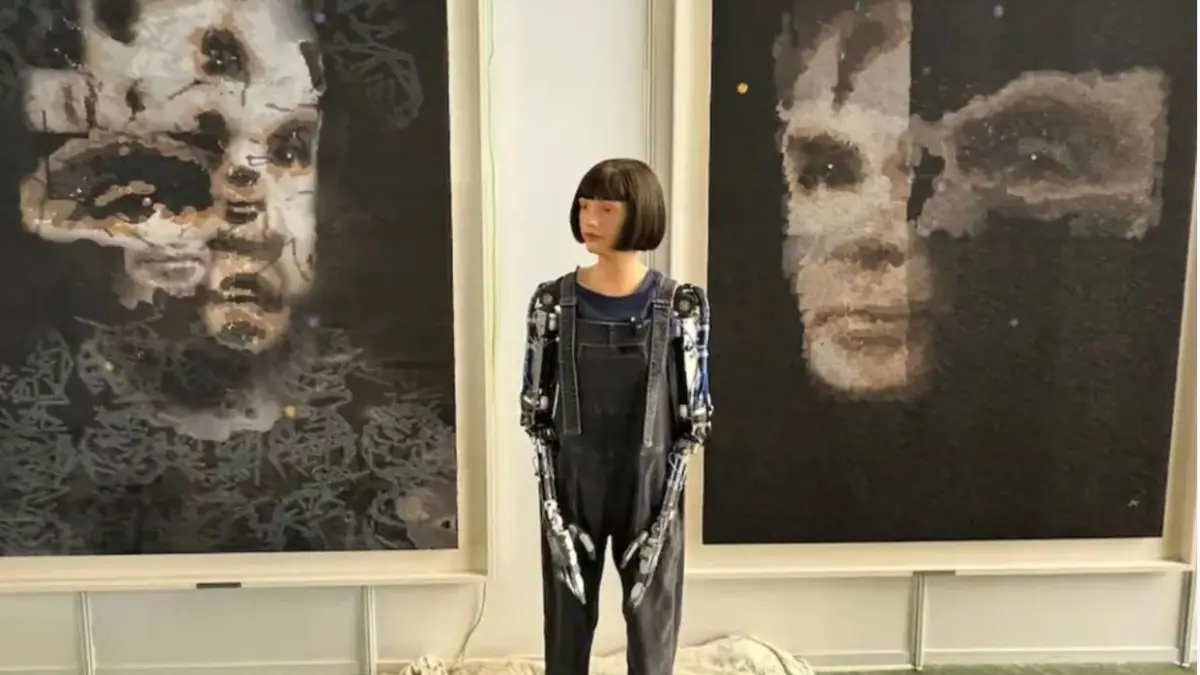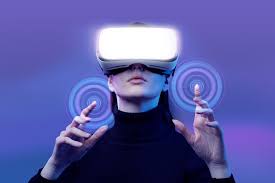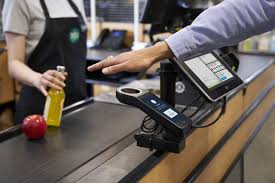
First Painting Created by AI Humanoid Robot
Artificial Intelligence is now making waves in the art industry, with the first AI-created painting recently selling for a staggering IDR 17 billion. As AI technology continues to advance, its influence in creative fields is becoming more apparent, challenging the traditional boundaries of human creativity.
The Rise of AI Humanoid Robots in Creative Fields
Humanoid robots are playing an increasingly prominent role in the world of art. These AI-powered robots are designed to understand and mimic human movements, enabling them to create original artworks that appeal to art collectors and tech enthusiasts alike.
The Making of the First AI-Created Painting
The creation of this AI-created painting involved intricate programming and algorithms that allowed the robot to replicate artistic techniques with incredible precision. This process marks a significant achievement in merging technology with art.
How AI Algorithms Replicate Artistic Techniques
AI algorithms are crafted to analyze thousands of artistic styles, brushstrokes, and color compositions. By mimicking these techniques, the AI robot was able to create a painting that appears both human-made and technically complex.
Role of Humanoid Robots in the Creative Process
With advanced sensors and movement controls, humanoid robots can hold and maneuver brushes, applying strokes in unique ways. This ability allows them to produce art that is technically impressive and creatively compelling.
The Story Behind the IDR 17 Billion Sale
The sale of the AI-created painting for IDR 17 billion highlights the growing interest in AI-generated art. Art collectors recognize the novelty and historical significance of owning the first painting made by a humanoid robot, making this transaction a landmark in art history.
AI-Driven Creativity: Art Beyond Human Limits?
AI creativity offers new possibilities in the art world. Unlike human artists, AI does not face limitations of time or physical exhaustion, allowing it to generate art continuously. This raises the question: Can AI art extend beyond what human creativity can achieve?
How the Art World Views AI-Generated Works
AI-generated art initially faced skepticism, with some questioning its authenticity and artistic value. However, as more AI-created works gain recognition, the art world is slowly opening up to the idea of AI as a legitimate art form.
Initial Skepticism Toward AI Art
At first, critics argued that AI-created paintings lacked the emotional depth of human-created art. They questioned whether a machine could genuinely produce “real” art without the influence of human experience.
Acceptance and Recognition by Collectors
Despite initial skepticism, collectors and enthusiasts now see AI art as a groundbreaking development in the creative field. The sale of this painting for IDR 17 billion reflects this shift, marking a significant milestone for AI in art.
Famous AI Humanoid Artists and Their Creations
Several AI humanoid robots have made their mark as artists. Among them, Sophia and Ai-Da have captured attention for their unique creations, demonstrating the versatility of AI in artistic expression.
Sophia and Her Artistic Endeavors
Sophia, an AI robot known for her lifelike appearance, has ventured into art by creating digital and physical artworks. Her unique pieces challenge the boundary between human and machine art.
Ai-Da: The Robotic Artist Making Waves
Ai-Da, another AI humanoid, has become one of the most prominent AI-created painting robots. She specializes in abstract and experimental art, making her pieces highly sought after by collectors.
Ethical Questions Around AI Art
As AI enters the art world, ethical questions arise. Who holds the copyright for AI-created works? Should robots be credited as artists, or do the creators of the AI algorithms take ownership? These are critical discussions shaping the future of AI art.
The Future of AI and Humanoid Robots in Art
The use of AI in art opens new possibilities and challenges. While AI is unlikely to replace human artists entirely, it may become a powerful tool for enhancing creativity and introducing fresh perspectives.
Will AI Art Replace Human Artists?
Many experts agree that AI is more likely to serve as an assistant to human artists than to replace them. While AI can produce remarkable work, it lacks the emotional intuition that defines human artistry.
The Role of AI as a Tool for Artists
AI is already being used to inspire and assist artists, allowing them to explore new styles and techniques. As the technology advances, more artists may turn to AI for collaboration in creating innovative art.
Conclusion: The Significance of the IDR 17 Billion Sale
The sale of the first AI-created painting for IDR 17 billion represents a significant moment in the world of art and technology. As more AI-driven creations emerge, the line between human and machine-made art will continue to blur, leaving a lasting impact on the art industry.
FAQ
How was the AI painting created?
The painting was created using advanced algorithms and sensors that allowed the AI robot to replicate human artistic techniques.
Why did the painting sell for such a high price?
The painting’s high value stems from its status as the first AI-created artwork to hit the market, marking a historic moment in art and technology.
Who bought the AI-generated painting?
The identity of the buyer remains private, but they are likely an art collector interested in the pioneering role of AI in creative fields.
What makes AI art unique?
AI art combines human-developed algorithms with robotic execution, creating works that blend technology and creativity in unprecedented ways.
Will AI art gain popularity in the future?
As AI technology improves, AI-generated art is expected to grow in popularity, especially among tech enthusiasts and modern art collectors.


